Incrementality should be a marketer's top priority. Here's why.
Do you know the true impact that marketing has on your business? If you rely on more traditional measurements of success like Cost-Per-Lead, Cost-Per-Acquisition and Click-Through-Rates, you’re likely seeing a very narrow view of your marketing investment. Even DR-focused metrics like return-on-ad-spend (ROAS), often leave us wondering what share of those returns would have occurred without spending media dollars.
As marketers, the fundamental question we should be trying to answer is not how much your audience bought, but how much MORE they bought because of your marketing.
This is where the value of incremental revenue comes into play.
Incrementality allows marketers to precisely measure sales and revenue lift attributed to each element of their marketing program, independent of other variables. This insight can inform your ability to make precise strategic decisions such as:
- Determine if the channels you invest in are actually contributing to your bottom line.
- Understand the impact of spending, or cutting spend with certain media platforms/vendors.
- Identify how messaging or creative strategies influence customer purchase behavior.
- Accurately attribute ROI across your marketing mix – multiple channels, segments, touchpoints.
- Hold vendors more accountable to the value they actually provide.
Business case for harnessing the power of incrementality.
Evaluating success based on incremental revenue allows you to prove how effective your strategies are at driving actual customer growth, independent of other variables. Let’s explore how incrementality can help you make smarter marketing investments.
Imagine you spend $250K advertising on two core digital programs – Facebook and Affiliate – with the goal of driving sales / revenue growth.
- Spend: $250,000
- Revenue: $700,000
- ROAS: 2.8:1
Affiliate
- Spend: $250,000
- Revenue: $500,000
- ROAS: 2:1
A ROAS or CPA model would tell you Facebook is delivering the most value. You might even optimize more of your investment toward Facebook at the expense of your Affiliate program. But what if I told you that 70% of Facebook audiences would have purchased from you anyway, compared to only 5% of your affiliate audience?
Incremental Revenue Lens
- Spend: $250,000
- Revenue: $700,000
- Incremental Rev: $210,000
- Incremental ROAS: 0.84:1
- Spend: $250,000
- Revenue: $500,000
- Incremental Rev: $475,000
- Incremental ROAS: 1.9:1
In this scenario, defunding affiliate would actually cost you hundreds of thousands in potential sales.
Incrementality helps you make smarter investment and optimization decisions. It can help you prevent, or at least balance, cannibalization across your marketing funnel. And that is why it should be a cornerstone of your strategy.
How to measure incremental sales lift.
In most cases, you can measure the incrementality of your advertising through controlled lift studies. Many of the go-to digital advertising platforms offer self-serve lift testing, and there are a variety of third-party solutions that allow you to run more complex attribution modeling and analysis. In general, three simple ingredients are involved in lift studies:

Control Group
% of audience does not see test variation of marketing

Expose Group
% of your audience sees test variation of marketing

Measurement
Increase/decreased percent of sales observed between control and test groups
Effective experiments start with clearly define objectives and strategy. While there are a number of ways to conduct tests that measure incremental revenue lift depending on your goals, the fundamentals are the same. Let’s put those pieces together into a couple real world examples.
A national consumer brand we partnered with set out to understand how different components of their media mix influenced incremental sales. To answer this question, we designed a multi-cell geographic lift test that exposed certain DMAs to different combinations of their media mix.
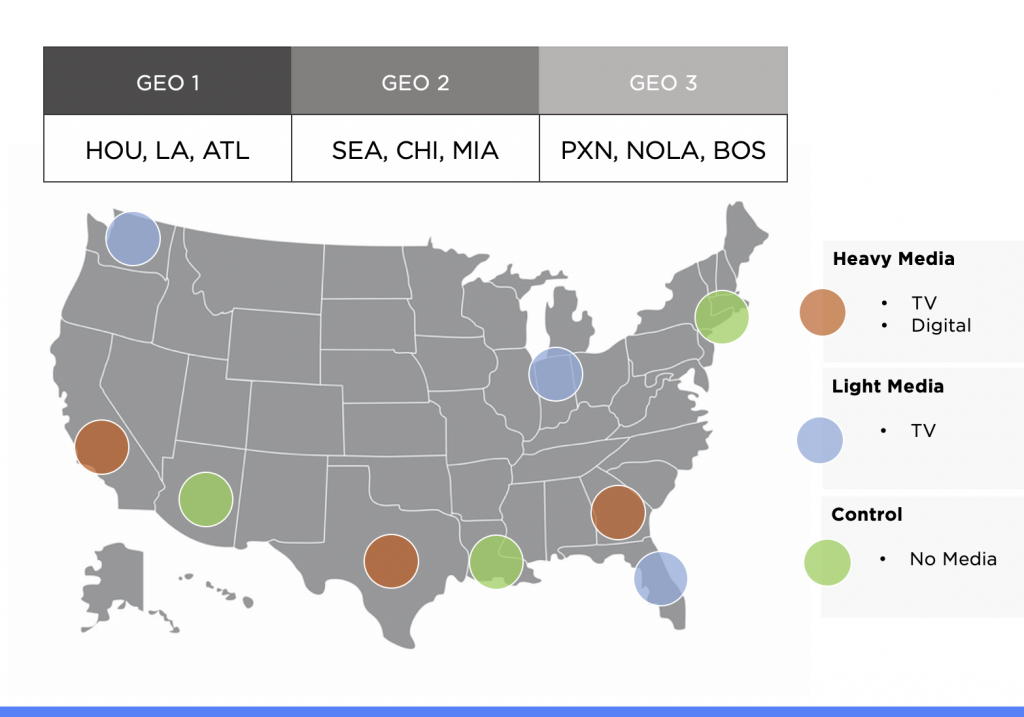
Scenario 1 | Geographic Lift Test
Cell 1 – Test Variation: Select 1-3 market segments as your test segment that receives both TV and digital media
Cell 2 – Control Variation: 1-3 similar DMAs as your control group – receiving only TV ads
Holdout: Markets that don’t receive any media
This could also be accomplished through sequential lift testing – turning on/off media during certain time periods and measuring drop in demand/sales. This can be less desirable for companies, as turning off media often translates into stunting sales momentum.
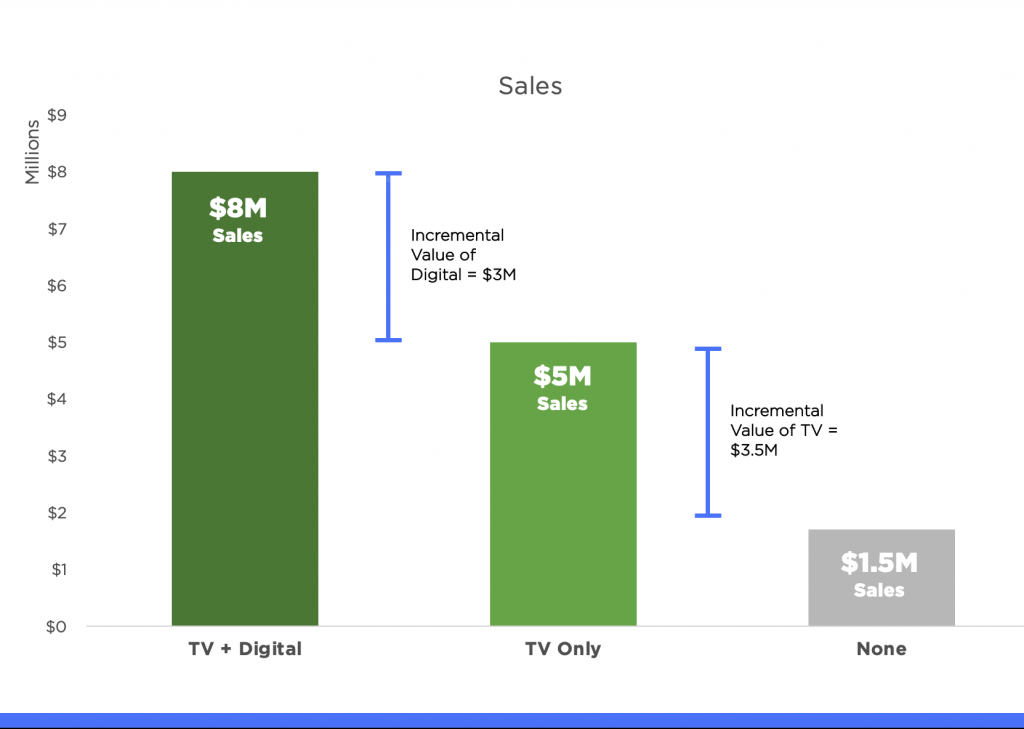
Similar methods can also be used to determine the impact of optimizations like new audiences, creative or objectives within individual channels.
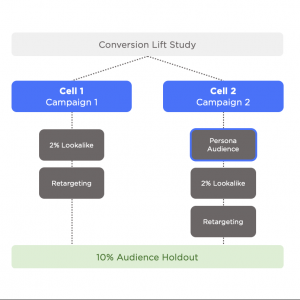
Scenario 2 | Facebook Conversion Lift Study
Facebook Conversion Lift studies compare the actions of real people in randomized test and control groups to measure the additional online, offline, or mobile app business.
Here’s an example of a campaign-level lift study designed to measure the impact of expanding into new persona audiences. Facebook will compare lift in conversions between Cell 1 (BAU – Control) vs. Cell 2 (BAU+Persona-Variant). A 10% random sample of your audiences is automatically removed as a holdout group.
Example Results May Look Like:
- 2,121 Incremental Conversions for Variant
- 1,347% Incremental Conversion Lift for Variant
- $25.12 Cost Per Incremental Conversion for Variant
Scenario 2 | Facebook Conversion Lift Study
Facebook Conversion Lift studies compare the actions of real people in randomized test and control groups to measure the additional online, offline, or mobile app business.
Here’s an example of a campaign-level lift study designed to measure the impact of expanding into new persona audiences. Facebook will compare lift in conversions between Cell 1 (BAU – Control) vs. Cell 2 (BAU+Persona-Variant). A 10% random sample of your audiences is automatically removed as a holdout group.
Example Results May Look Like:
- 2,121 Incremental Conversions for Variant
- 1,347% Incremental Conversion Lift for Variant
- $25.12 Cost Per Incremental Conversion for Variant
Use strategic learning roadmaps to prove impact over time.
Marketing isn’t static. We’re constantly optimizing campaigns and testing new strategies to support business growth. Incremental lift studies should be integrated into your broader strategic roadmap as a mechanism for proving the impact of optimizations over time.
Enter “learning roadmaps.” As a core component of the planning process, we define learning roadmap frameworks tied to bigger picture objectives for the quarter (or year). Here’s an example of what a Facebook Conversion Lift learning roadmap might look like for a 12-mo. brand or product launch strategy.
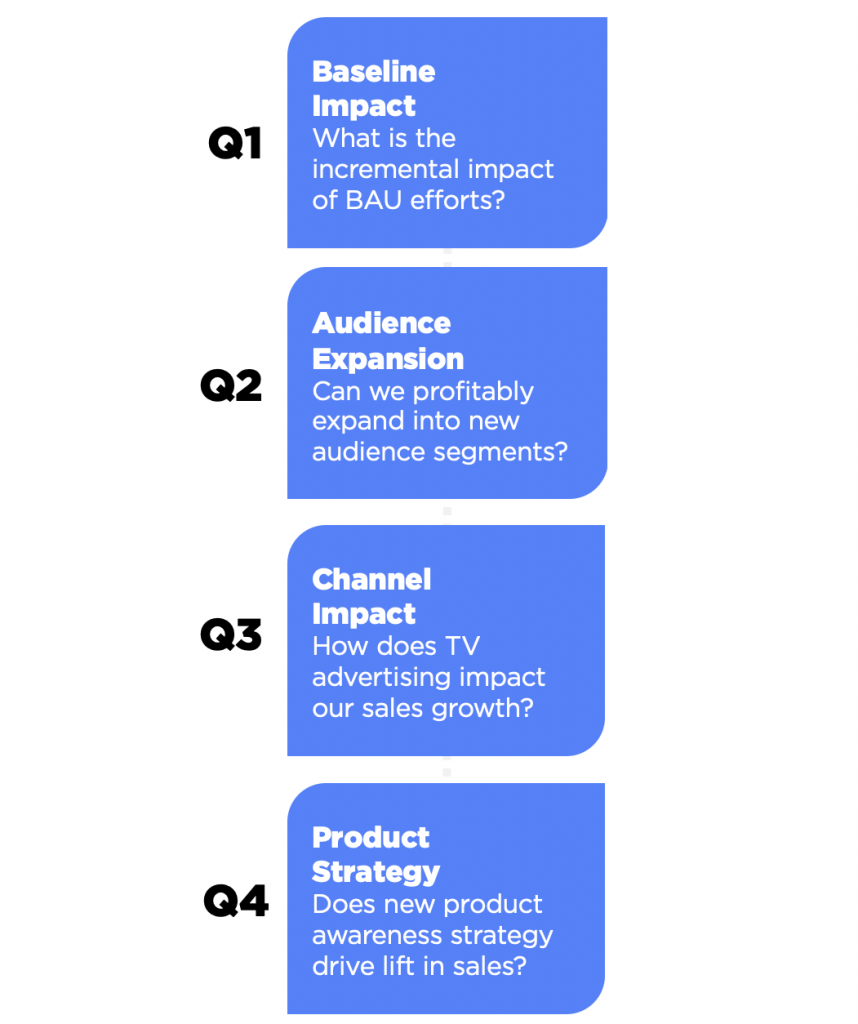
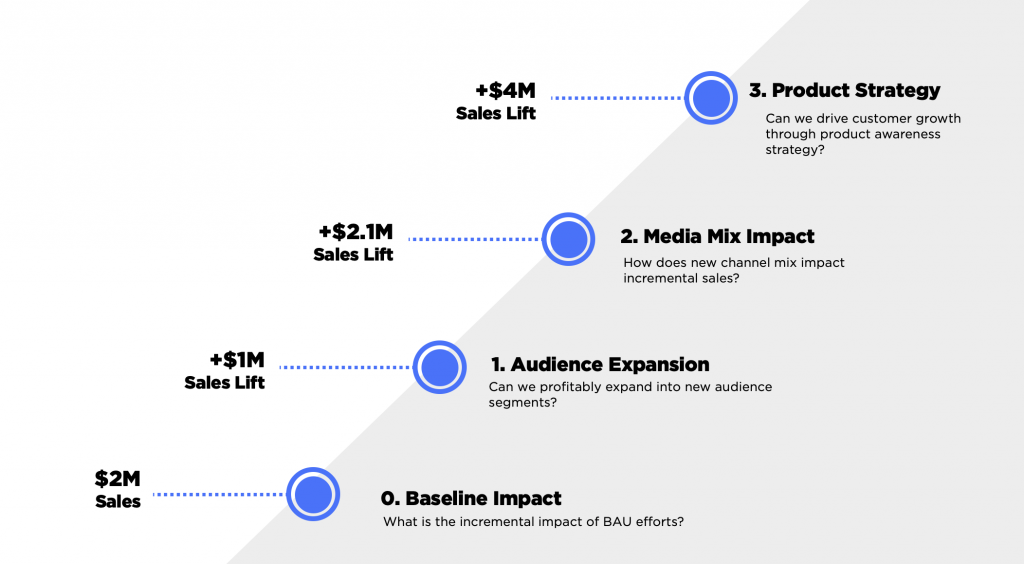
By the end of this testing sequence, we are measure the performance of each milestone and prove that the Facebook launch strategy delivered $7.1M in total incremental revenue.
That’s just the tip of the iceberg. Incrementality is a vast topic with various facets to study. From attribution modeling and technical integrations, to experimentation and frameworks, there’s a lot to sink your teeth into. Keep an eye out for more perspectives and case studies from the Theo team.

